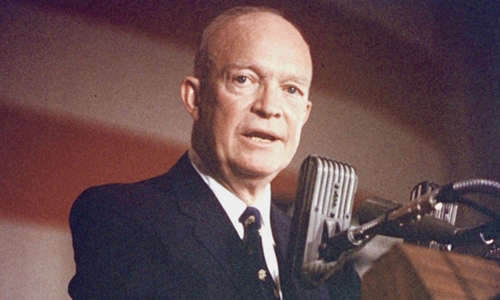A cool Saturday afternoon in September 1955, President Dwight D. Eisenhower complained about indigestion while playing golf.
At that time, the US economy was booming, there was no major crisis in the world and Eisenhower, 34th President of the United States (in power from 1953 to 1961) had a 79% confidence level. He began to feel uneasy when playing to the eighth hole at a golf course in Cherry Hills Country Club, a suburb of Denver, Colorado.

The heart attack evaporates $ 14 billion Photo: Life
24 hours later, the American people are informed that the President is in an oxygen tent (the veil is placed on the head and shoulders, or on the whole body of the patient to provide oxygen at a level higher than normal) at Fitzsimons Army Hospital, treated by the best cardiologists in the country. By September 26, 1955, the stock market plummeted, the Dow Jones index fell 6%, causing $ 14 billion in evaporation, marking the worst day of the market since World War II.
Eisenhower started smoking when he was a student at the US Army Academy (West Point). At the age of 59, he smoked 4 packs of cigarettes a day although doctors advised to cut back. Eisenhower's main physical activity when he became president was to play golf.
On September 24, 1955, Eisenhower spent more than five weeks in Denver, fishing in the Rocky Mountains and playing golf. However, the fresh air could not ease the President's temper. He was grumpy because the golf session was constantly interrupted by a call from Secretary of State John Foster Dulles. A person on the scene recounted that the President was so frustrated that he "had a tendon on his forehead".
That evening, after indigestion, Eisenhower woke up with chest pain at about two in the morning. His personal doctor, Howard Snyder, was called in and injected with morphine. 8am the next morning, the White House announced Eisenhower "digestive problems". 4 hours later, the White House said that the problem was not serious.
But when Eisenhower's chest pain persisted until the afternoon, he was examined with an electrocardiogram and found an acute myocardial infarction. Around 2:00 PM, the President was taken to the hospital. Snyder has confused coronary artery thrombosis with gastrointestinal problems and took more than 10 hours to realize his mistake.
Eisenhower's health condition stabilized after being allowed to use oxygen tents, he and his advisers decided to avoid causing panic to people by announcing the situation as frankly as possible. When Eisenhower left the hospital six weeks later, the American public was still updated with detailed information about the President's health.
Over the next few months, both the market and Eisenhower recovered. In February 1956, Eisenhower ran for the second term. Despite having surgery in June for enteritis, he defeated Democratic candidate Adlai Stevenson. However, a year after being re-elected, Eisenhower had to return to the hospital due to a minor stroke.
During his second term, Eisenhower paid more attention to health and exercise, but continued to smoke and disobey a diet designed to avoid heart and digestive problems. After his first heart attack in 1955, Eisenhower experienced at least 7 heart attacks and 14 heart stops before passing away in 1969 at the age of 78.
William Sterrett, the doctor who took care of Eisenhower after he left office, said that Eisenhower once had severe abdominal pain. Sterrett asked him what he ate for dinner and Eisenhower said it was a ham and pickled cabbage, which were indigestible.
"Why are you eating these?" The doctor asked. "Because I like it, damn it!" The former president answered.



 CathleenHenson
CathleenHenson







